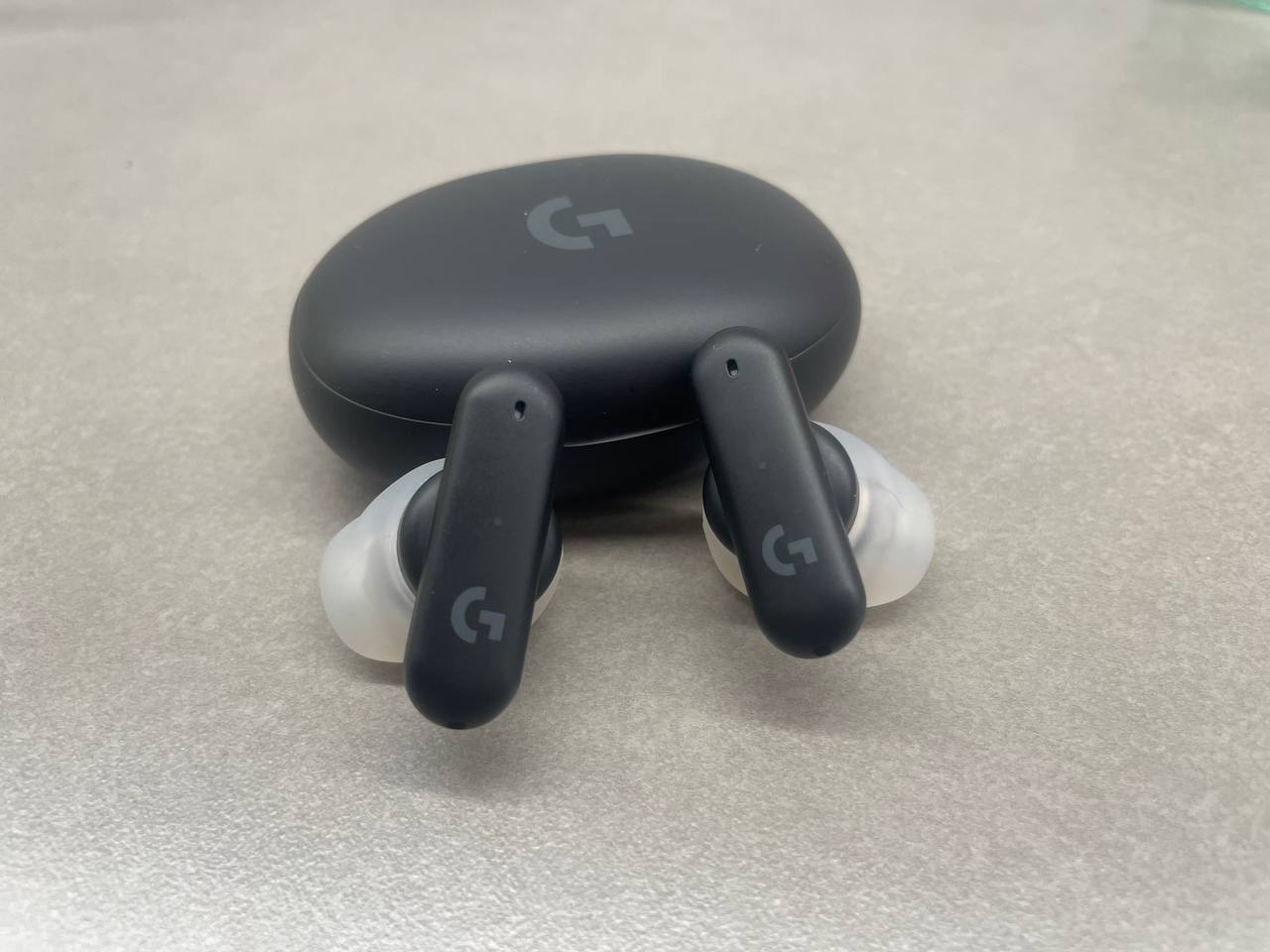LOGITECH

Test: Logitech G Fits headphones
Logitech’s button-style G Fits gaming headset aims to stand out from the crowd with a technology called LightForm. The silicone ear pieces are molded and hardened with the help of light to match the user’s unique ear profile. In practice, however, G Fits are a pricey disappointment.
Available in black and white Logitech G Fits – headphones, with their price tag of 249 euros, place themselves in the category of premium gaming headphones and in-ear headphones. There aren’t many in-ear gaming headphones of the same price range available on the market. For “ordinary” in-ear headphones, Bose QuietComfort Buds 2 and Apple’s AirPods Pro 2 are placed in roughly the same price range, for example.
The pill-shaped headphones with 10 mm headphone elements are compatible with both PC and Mac computers, Sony PlayStation and Nintendo Switch game consoles, and mobile devices. Wireless connection is possible either with Bluetooth or with the help of a separate transmitter with Logitech’s own Lightspeed technology. The headphones also have microphones.
The headphones are not actually in-ear models, but they fit in the ear “semi-internally” like the Bose QC Buds.
With the Lightspeed connection, the headphones have enough power for up to seven hours of use on one charge, and you can get additional power for eight hours from the charging case. If the headphones are used with a Bluetooth connection, according to the manufacturer, the usage time is ten hours with one charge, and the charging case provides power for up to 12 additional hours.
Based on practical tests, the estimates of the battery life are roughly correct, but some of the earphones offer, at least in terms of the case, a longer battery life than a fair one full charge.
In addition to the headphones, the product package includes a Lightspeed USB-A adapter, a USB-C adapter, a charging case and a short charging cable. Unfortunately, there is no place for the Lightspeed adapter in the headphone case, so it is inconvenient to carry it around.
When using Logitech headphones, their own application can be used to activate the built-in LED lights of the headphones, which harden the gel cushions of the headphones to the shape of the ear when placed in place. The phone’s packaging instructs you to download the application, and the application gives the rest of the instructions.

At least in my case, the headphones that adapt to the ears were disappointing in terms of comfort.
The headphones are basically comfortable in themselves and they do not cause headphone fatigue, but you would expect much more from headphones that adapt to the ears. The headphones are by no means the most comfortable in-ear headphones I’ve used, and for example Bose’s QuietComfort Buds are better in my ears.

Due to their malleability, lending headphones to, for example, a family member is also difficult. Of course, the hygiene of borrowing earphones is a bit of a problem anyway.
I don’t know if the headphone molding process somehow went wrong for me despite following the instructions, or what is wrong. In particular, the right earphone feels uncomfortably loose in the ear, and seems to constantly slip out of the ear. The headphones sometimes fall out of the ears during fast movement, such as jogging, so the G Fits are not suitable for sports use.
Whereas many in-ear headphones usually come with at least three different sized ear tips, G Fits are only available in one size. Perhaps the lack of fit for my own ears is due to the fact that my own ears are larger than average, and usually require the largest available ear adapters for other headphones. This way the G Fits can be too small for me.
The technology and comfort of use that molds to the ears is disappointing, at least for me. The other areas of the headphones also fail to convince.
Connecting the headphones to the phone for the first time required digging through the instruction manual. The headphones have to be kept in the box with the lid open, in which case the button in the box had to be held down for three seconds. Only then can you take the headphones out of the box.
After the first connection, the connection sometimes felt buggy, as the headphones did not always automatically connect to the phone. Sometimes only one headset connected to the phone and the other remained muted, so the connection had to be established again and again.
The sound quality of the headphones is not very good considering the price. The voices have a treble advantage and the bass does not repeat very strongly. Even significantly cheaper headphones have offered better sound quality to my own ears. However, the reason may be that the headphones didn’t adapt to my ears properly, which inevitably also affects the sound quality when it comes to in-ear headphones.
With the G Fits application, you can also modify the equalizer settings according to your preferences.

The low-latency Lightspeed connection technology is a nice addition, but at least in my own use, the difference in latency is practically not very noticeable. Perhaps, for example, in very fast-paced shooter games it is important to hear the sounds as real-time as possible, but in everyday use the difference is minimal.
You can quickly switch between connections using the tactile buttons on the headphones, but their functionality turned out to be poor, and the headphones did not always register a press.
G Fits do not offer an active anti-noise function. The feature may not be very useful if you focus on playing at a computer or game console, but you would still expect the feature from headphones priced at 250 euros, when it can also be found in many significantly cheaper models. From a gaming point of view, an active anti-noise function would be a joy, at least for mobile gamers and, for example, Nintendo Switch or Steam Deck users.
The headphones have a small amount of passive attenuation, but it is not enough to dissipate the noise of, for example, public transport.
The microphones are also disappointing. According to gaming friends, the sound quality produced by the headphones is at the level of a cheap microphone, and the sound quality and volume remain poor.
Overall, the G Fits turned out to be an expensive disappointment, at least in my case. Despite the moldable technology, the headphones fit the ears poorly, which may be due to the fact that they are too small for my own ears and larger adapters are not available.
Perhaps the headphones would be a little more comfortable for those with smaller ears, but with a price tag of 250 euros, the risk that the headphones are not very comfortable is high. You can’t even try the headphones on your own ears before buying, because they are molded to the ears of each individual user. In general, many cheaper headphones offer more features and thus a better price-quality ratio.
Good:
-An interesting idea about headphones that mold to the ears
-Can use a fast Lightspeed connection
Bad:
-Price
-Comfort in practice
-Sound quality
-Connection problems
-Microphone
Logitech G FITS features:
-Price: 249 euros
-Individualized Lightform fit
-Connections: Lightspeed and Bluetooth 5.2
-Compatible with e.g. With PC and Mac, PS5/PS4 and mobile devices
-10 mm speaker elements and beam-forming microphones
-battery life: up to 10 hours of listening time + 12 hours with charging case (Bluetooth)
-Charging with a USB-C cable, a 10-minute charge gives approx. one hour of playback time
-Headphone weight: 7.2 g per headphone
Reporting: Ilari Hauhia

No comments:
Post a Comment